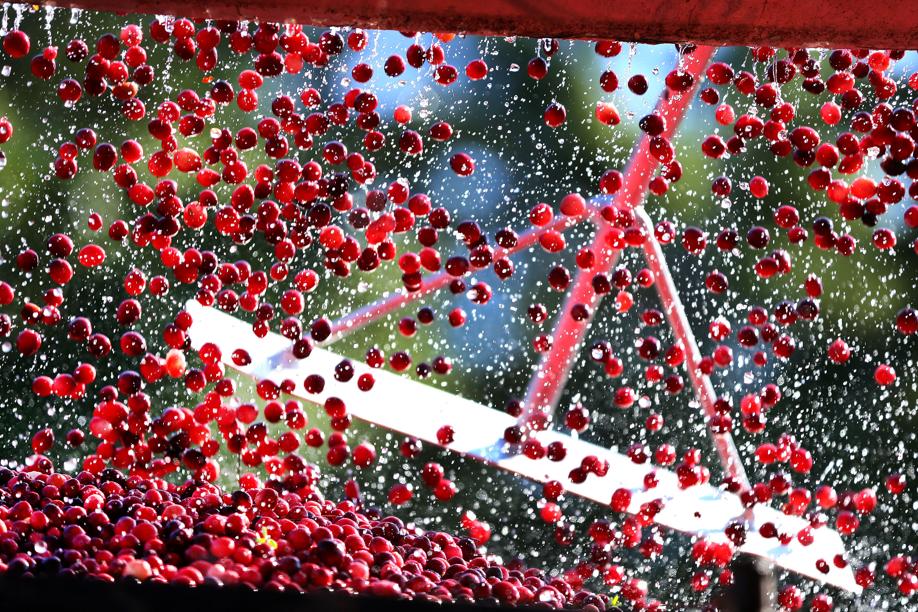
WASHINGTON — When President Trump imposed stiff tariffs on steel and aluminum imports earlier this month, he invited metal workers in hard hats to the White House signing ceremony, saying the move would protect their jobs.
But a few weeks later, the ripple effects of that decision are being felt in other industries across the country as the European Union prepares to retaliate. One potential victim: the humble cranberry industry in Massachusetts.
The Bay State’s top agricultural food crop — valued at close to $70 million in 2016, according to the most recent government data — could now face a 25 percent tariff on exports to Europe. Exacerbating the challenge is the booming cranberry industry in Quebec, which outproduced Massachusetts for the first time in 2014 and could see further growth if US cranberries are suddenly more expensive for European consumers.
“The effects of this could be decades long,’’ said US Representative Bill Keating, the Bourne Democrat who several years ago helped start the Congressional Cranberry Caucus.
“There’s a way to deal with trade inequities. But anyone with even a casual knowledge of the field knows it should be done strategically and surgically,’’ he added. “We’re seeing the opposite. This is an ax taken to this with collateral damage all around the place.’’
Keating spoke Tuesday with David O’Sullivan, the EU ambassador to the United States, urging free trade policies and making the case that US cranberries be left out of a looming trade war.
The EU is the top destination for cranberry exports from Massachusetts, which produces an estimated 15 percent of the world’s cranberries on its 13,500 acres of farms. Many of those are operated by small farmers in Southeastern Massachusetts and on Cape Cod. Ocean Spray, a large cooperative and one of the industry’s most dominant players, is based in Lakeville. Ocean Spray declined to comment.
Trump’s latest trade moves could cause upheaval in a range of US-based products. Soy bean farmers and airline manufacturers are worried that China could retaliate against new tariffs. Car companies are concerned about what would happen if NAFTA negotiations collapse. And the European Union has published a lengthy list of targets that includes everything from Kentucky bourbon to Florida orange juice.
Cranberries are a tiny overall slice of the global trade markets. But a fruit native to North America — and most identified with Thanksgiving — has seen a boom in recent years, partly because of increased demand in China.
The aim of the proposed European tariff likely is to put pressure on House Speaker Paul Ryan, a Republican, whose home state of Wisconsin is the top cranberry producer in the country. Massachusetts is the second-largest cranberry state, producing nearly one-fourth of the nation’s crop in recent years.
There are more than 2,100 full-time cranberry industry jobs in Massachusetts, and an additional 4,800 that rely on cranberry production, according to a state report in 2016. The state estimates the industry’s economic impact at $1.4 billion.
Cranberry is the official state berry and color. The state’s official drink? Cranberry juice.
Wild native cranberries were cultivated in the early 1800s in the state, with British ships making return voyages with cranberries to bring home and use as a source of vitamin C to prevent scurvy during the journey, according to “America’s Founding Fruit: The Cranberry in a New Environment’’ by Susan Playfair.
The potential EU backlash is concerning, said Brian Wick, executive director of the Cape Cod Cranberry Growers’ Association, which was established in 1888. “The European market is our strongest and oldest export market for cranberries.’’
Massachusetts growers have struggled in recent years with a saturated domestic market, prompting them to increase marketing overseas. Their Canadian competition could grab more market share without the burden of the EU’s tariff.
“Canada will just move in,’’ Keating said. “The market is there. . . .
“In Europe there was no word for cranberry. We’ve gone from them not knowing what to even call the product to marketing it, finding a market for it. They now have ‘craisins’ in their salads.’’
Trump’s 25 percent tariff on steel and 10 percent tariff on aluminum are scheduled to go into effect on Friday.
“We will not sit idly while our industry is hit with unfair measures that put thousands of European jobs at risk,’’ European Commission President Jean-Claude Juncker said. “The EU will react firmly and commensurately to defend our interests.’’
If the Trump administration goes through with imposing the steel and aluminium tariffs on the European Union, it would set off a 90-day review period where the EU would begin laying the groundwork for tariffs on the US-based goods.
“I’m not aware of cranberries ever being put on a list like this in the past,’’ said Terry Humfeld, the executive director of the Cranberry Institute, a Carver-based nonprofit that represents members in national and international regulatory matters. “We need to see the results of their internal consultations at the EU. Once we see a final result, and where they end up on this process, we’ll react accordingly. Right now we don’t know what we’re up against.’’
Matt Viser can be reached at matt.viser@globe.com.



